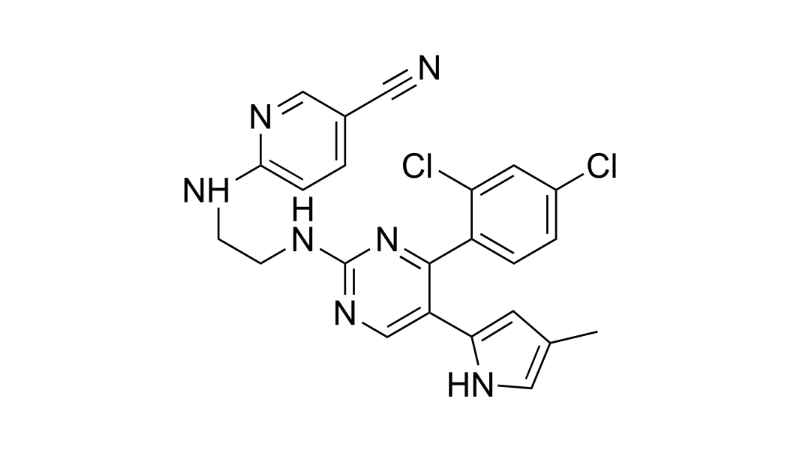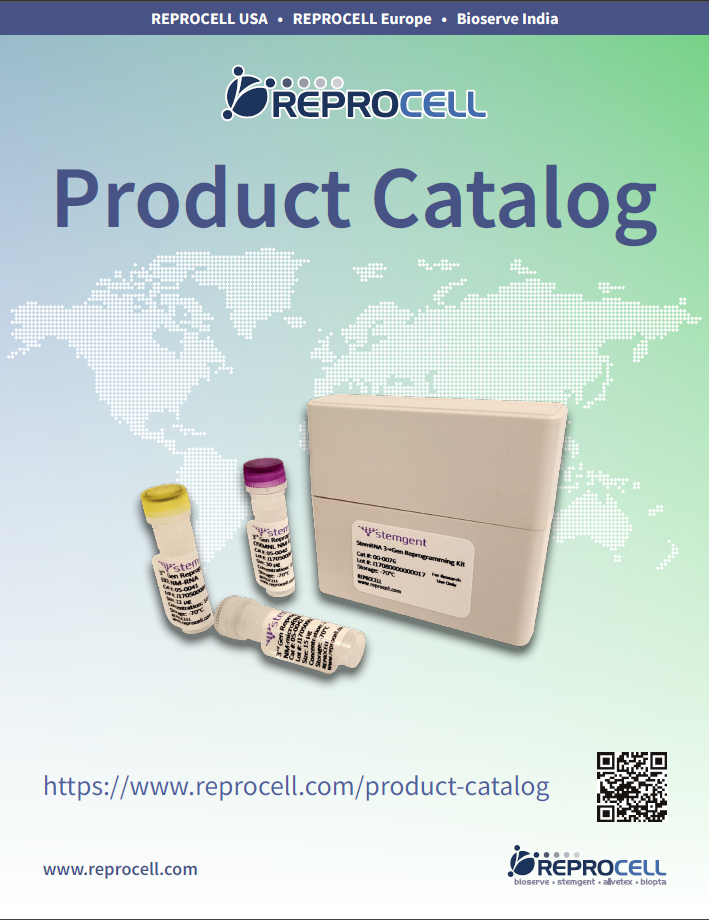CHIR99021, also known as CT99021, is a small molecule compound that has proven to be a potent and versatile tool in the world of stem cell biology and regenerative medicine. It acts as a selective inhibitor of glycogen synthase kinase 3 (GSK-3) with a high affinity for GSK-3β. GSK-3 is a serine/threonine kinase that plays a crucial role in various cellular pathways. (1)

CHIR99021 structure
CHIR 99021 – Mechanism of Action
The mechanism of action of CHIR-99021 involves inhibiting GSK-3 activity. GSK-3 has two isoforms, GSK-3α and GSK-3β, and CHIR99021 can inhibit both isoforms. By inhibiting GSK-3, CHIR 99021 disrupts the phosphorylation of specific target proteins in the Wnt/β-catenin signalling pathway. In particular, it prevents the phosphorylation and subsequent degradation of β-catenin, a key component of this pathway. This leads to the stabilization and accumulation of β-catenin , which in turn translocates to the cell nucleus. (1)
REPROCELL Stemolecule™ − small molecules such as CHIR99021 are ideal for stem cell culture and manipulation. Each lot is tested for purity and toxicity toward stem cells.
Wnt signalling pathway
The Wnt/β-catenin pathway causes an accumulation of β-catenin in the cytoplasm and its eventual translocation into the nucleus. It acts as a transcriptional coactivator of transcription factors that belong to the TCF/LEF gene group. (2). Therefore, without Wnt, β-catenin would not accumulate in the cytoplasm since a destruction complex would normally degrade it. This destruction complex includes proteins such as GSK3 and casein kinase α (CK1α) and acts by targeting β-catenin for ubiquitination, resulting digestion of the proteasome (3). Wnt binds its receptor Frizzled and co-receptors. This leads to the accumulation of free non-phosphorylated β-catenin in the cytoplasm and its translocation into the nucleus, where the β-catenin cooperating with the transcription factor Tcf/Lef activates Wnt target gene expression. Therefore, the activity of the Wnt/β-catenin signaling pathway is dependent on the amount of β-catenin in the cytoplasm and GSK-3 plays a key role in controlling the amount of β-catenin (2). Furthermore, CHIR99021 acts as an indirect activator of Wnt through its inhbition of GSK (1).
-1.png?width=1200&height=900&name=wnt-pathway-for-blog%20(2)-1.png)
Figure 1: the Wnt/β-catenin pathway WNT ON state: WNT proteins bind to frizzled receptors and the LRP co-receptor, acting to suppress the activity of glycogen synthase kinase-3β (GSK-3β). " WNT OFF state " : Without the WNT ligand, the destruction complex of β-catenin, a tertiary complex formed by axin, APC, CK1α and GSK 3β will phosphorylate β-catenin, resulting in proteasomal degradation.
The use of CHIR 99021 in stem cell research
CHIR99021 is frequently used in stem cell research and regenerative medicine to promote the self-renewal and pluripotency of embryonic stem cells (ESCs) and induced pluripotent stem cells (iPSCs) by enhancing the Wnt/β-catenin signaling pathway. This activation facilitates the derivation of high-quality, undifferentiated cell populations. Researchers utilize CHIR99021 not only to maintain stem cells in an undifferentiated state but also to guide their differentiation into specific lineages, offering a versatile tool in the pursuit of understanding cellular differentiation and developing potential therapeutic applications in regenerative medicine (4). Additionally, CHIR99021 has applications in other fields of research, including cancer biology, where it can impact the behavior of cancer cells by modulating Wnt signaling.
Preparing a stock solution for CHIR99021
Assuming molecular weight of 465.34 g/mol, effective concentrations of CHIR99021 for cell culture applications range from 0.1µM to 15µM.
A suitable 10mM stock solution in DMSO can be prepared from 2mg for various applications by reconstituting the entire vial contents through the addition of 429.8µL of pure DMSO.
Where N = number of moles, MW = molecular weight, C = concentration and V = Volume

Step by Step
1. Mix the complete contents of the vial by incorporating 429.8µL of pure DMSO. For solubilization heat the mixture to 37 °C for 3–5 minutes.
2. Prepare appropriate sized single use aliquots to avoid freeze thaws. Store at –20°C and protect from light. The DMSO concentration in culture should not exceed 0.5 %.
Use in cell culture: Thaw aliquots at 37 °C as needed. Prewarm the cell culture media prior to adding the reconstituted compound to avoid precipitation. Mix and filter the media through a 0.2µm low protein binding filter.In 2010, Stemgent™ was the first company to commercialize mRNA reprogramming. In 2014 Stemgent iPS cell business unit was acquired by REPROCELL company (Japan).
Today, REPROCELL Stemgent is armed with broad range of products and services for Stem Cell Scientists at leading pharmaceutical and biotechnology companies, as well as top academic and government research institutions from all around the globe.
References
(1) David, B et al. Selective Glycogen Synthase Kinase 3 Inhibitors Potentiate Insulin Activation of Glucose Transport and Utilization In Vitro and In Vivo . Diabetes; 52 (3): 588–595 (2003)
(2) Wang, B. et al. A highly selective GSK-3Β inhibitor CHIR99021 promotes osteogenesis by activating canonical and autophagy-mediated wnt signaling, Frontiers in endocrinology. Front Endocrinol (Lausanne). 13: 926622. (2022)
(3) Tata Purushothama Rao and Michael Kühl. An Updated Overview on Wnt Signaling Pathways. Circulation Research 106:1798–1806. (2010)
(4) Susanne J. Kuhl and Michael Kuhl. On the role of Wnt/β-catenin signaling in stem cells BBA-general subjects Volume 1830, Issue 2, Pages 2297-2306. (2013)






